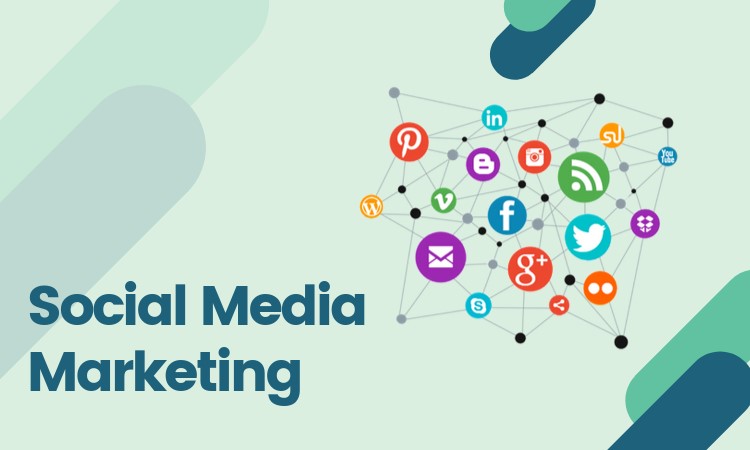
Social
These days, the 4th industrial revolution, a lot of AI and technologies have developed. And many mechanical things are made for more convenient communication, work, and most of our life. Also, it has been improved to give more interesting, fun, and joyful things to humans, such as games, videos, and social media. They are made for fun and have impacted our lifestyle and education. A lot of social media platforms are available for different reasons. Some came out to help develop background knowledge, and some were made to support work and communication. Some people make money with those platforms, performing a lot of content such as gaming, teaching, communicating, and more. As the value of social media is increasing, students need to know how social media will affect their education positively and negatively.
One of the positive impacts of social media on education is its ability to expand access to knowledge. Social media helps students to find educational information more conveniently. It can provide ideas with a lot of visual aids, which help to understand the main idea faster and quicker. For example, sites such as ‘Youtube’, or ‘EBS’ provide many videos that teach students in every subject. Especially ‘EBS’, provides high-quality educational videos the teachers volunteer to teach students in front of the camera. In addition, the courses on this site cover all subjects, including math, science, and social studies, and even include videos tailored to grades 1 through 12. Lee Je-Hong, a Professor at Chosun University, came out with research about the impact of social media on education. The results of the empirical analysis showed that SNS mutual application, SNS knowledge sharing, and SNS realism have positive effects on academic achievement. This tells that social media would be a tool in educational contexts for students. By supporting student collaboration and exchange of ideas, they can deepen their understanding of the topics they wish to learn.
Social media also allows students to connect with experts and mentors in their field of interest. In intention, there are more social network sites that are related to education. For example, Quora, a question-and-answer website, provides a space for students to question and answer some questions about their studies with other people. It helps to find the accurate answer for students whether they are trying to find out and find out the most helpful and informative answers by the voting system. Jaffar Abbas defines social media as directing the means of communication between students and other individuals, communities, and large organizations. By looking at that, we can find out that social media provides opportunities for students to connect directly with experts and mentors in their fields of interest. Through this, students can get practical advice and insights rather than just textbook knowledge. As defined by Jaffar Abbas, social media is a principal means for students to communicate with other people, communities, and larger organizations and connect with the wider world.
As there are many convenient and positive effects that social media educationally gives students, there are also a lot of dangers and poison at the same time. These days, just not a platform with education has grown so far. Some of them are made for entertainment that is incredibly addictive. For example, A short-form video is one of the most addictive features of social media. It is easy to find on most famous websites such as YouTube, Facebook, Twitter, or Instagram. Most social media users are addicted to those infinitely short videos. Short-form videos are tonic and have characteristics that make people seek out greater stimulation. Department of Psychiatry, Seungyong Jang says that social addiction to media shows a similar pattern to addiction to substances such as drugs and alcohol. It can also cause the ‘popcorn brain phenomenon’. The popcorn brain phenomenon is the act of repeating only temporary and immediate phenomena and continuously searching for related phenomena without letting go of various devices, which means that students can be influenced by sensational media for the rest of their lives by only being influenced by provocative elements. According to previous studies, the longer students are exposed to provocative content, the risk of worsening mental health, such as depression, anxiety, and ADHD, and in severe cases, tic-like behavior syndrome may occur. Those studies are way too harmful to students, especially in education. As short-form videos are distributed in many places these days, there is a risk that students may become absorbed in short-form videos without realizing it.
What will happen if students watch too many provocative videos and content after all of those effects? According to Kim Dae-jin, a professor at the Catholic University School of Medicine, overuse of phones, including social media, can also affect our brains. Professor Kim revealed that the brains of students who frequently use smartphones may not develop when they should and that the connectivity of the part of the brain involved in language processing is low, leading to a slow increase in brain volume. Among the top 10 most popular apps in the world, more than five apps that contain a lot of short-form content, that is, apps related to social media, appeared. That is how much social media is involved in the lives of students and others. If students become addicted to SNS and continue to search for stimulating things, they will not be able to find interest in studying, and in the end, they will only be left with the impression that studying is boring and that they do not want to do it.
In conclusion, social media provides our students with many study materials and methods and helps them communicate with others smoothly, allowing them to exchange ideas. However, provocative videos on social media sites can support students’ physical and mental health. It can destroy the underlying psychological stability. As a student, I believe that social media hurts students’ studies. After researching and learning from various research materials, I decided that social media could be more toxic to students. Professor Kim said that the only way to reduce cell phone addiction is to reduce cell phone use. Therefore, for the sake of students’ studies and the future, why not try reducing the use of social media and electronic devices?
By: Jinhan Jeong
Write and Win: Participate in Creative writing Contest & International Essay Contest and win fabulous prizes.


